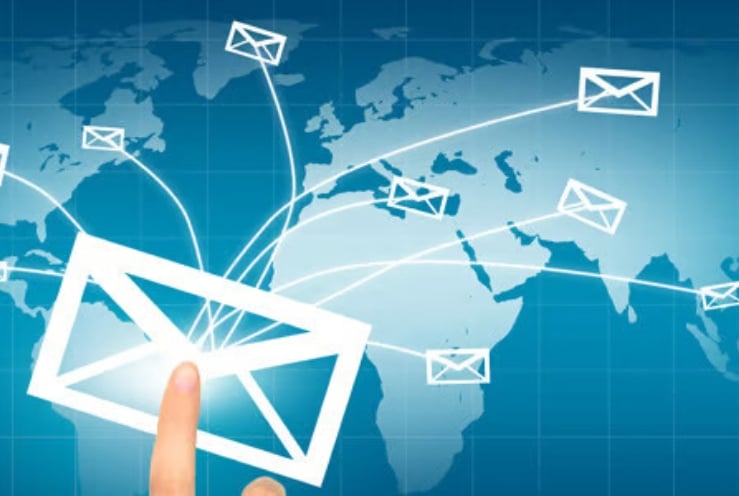
What Are The Differences Between SMS And Email Marketing?
The digital marketing landscape offers various channels for customer engagement, with SMS and email marketing at the forefront. This piece evaluates the differences between these tools, discussing how businesses can use them together to create a well-rounded marketing strategy that maximizes reach and effectiveness.
Immediate Reach Versus Sustained Engagement
One of the most noticeable differences between SMS and email marketing lies in their delivery and consumption patterns. SMS marketing typically boasts a higher open/read rate than emails, often cited at over 90%. The key reason behind this is that when SMS messages are delivered on a phone, they pop up immediately grabbing the consumer’s attention. Since they are short messages, they are typically read. Text messages are short, direct, and immediate, making them perfect for creating engaging communications. They also tend to work best when businesses need to reach customers quickly and efficiently, such as for appointment reminders, flash sales, or critical updates.
On the other hand, email marketing excels in delivering detailed and rich content to customers, cultivating a more prolonged engagement. Emails provide ample space for businesses to elaborate on their products or services, embed images or videos, and use design elements to catch the customer’s eye. This format is ideal for newsletters, product updates, and in-depth promotional campaigns.

Audience Reach and Segmentation
Another significant difference between SMS and email marketing revolves around audience reach and segmentation capabilities. Email marketing allows businesses to reach a global audience, as it isn’t reliant on mobile networks. SMS must rely on mobile networks and phone carriers for messages to be delivered.
With advanced platforms both can provide extensive segmentation options, allowing marketers to create personalized messages based on customers’ buying habits, interests, and behavior. Both can also support sophisticated drip campaigns as well that provide complementary follow-up campaigns.
It’s crucial to note that SMS marketing is governed by more rigorous regulations for customers to opt-in (TPCA -see below), which initially will lead to a smaller, yet generally more engaged audience. Companies need to think creatively about ways to get their larger email audience to opt in for text marketing campaigns with special offers and incentives. Often by providing ” text” only specials to customers will work effectively.
Cost and Return on Investment (ROI)
The cost structures for SMS and email marketing are different. Generally speaking, SMS marketing tends to create greater, faster engagement and response rates but also tends to be more expensive on a per-message basis than email marketing. This is due to the fees charged by mobile carriers.
Conversely, email marketing has a lower cost per message, especially when used long term for creating brand awareness, nurturing leads and driving customer engagement over time. Both approaches work and depend on your objectives, but the immediacy and intimacy of SMS has proven to provide stronger ROI; especially when specific calls to action are promoted.
Privacy and Regulations
The regulations governing SMS and email marketing are another aspect to consider. With SMS, consumers must provide explicit consent before a business can include them in an SMS marketing campaign. This is why it’s important to think about ways to get customers to opt in for marketing messages and many companies have had great success by offering “text only” incentives to their audience to make this work.
Email marketing is subject to regulations like the CAN-SPAM Act in the U.S. and GDPR in the EU, which mandate certain practices like making the ability to unsubscribe easy. These laws aim to protect consumers’ privacy and provide them with control over what they receive in their inboxes.
Striking the Right Tone
Another difference between email and SMS marketing is that the nature of SMS makes it important to strike a more personal tone in your messages. For example, you wouldn’t want to simply use email copy in a text campaign. It would typically be too long and too formal and not appropriate for this short form messaging construct. It is good practice to make text messages short, ideally less than 160 characters, with a picture included to drive engagement while striking a more personal note. Many companies like to send messages that “feel” like the manager is sharing a special promotion with each customer personally – these types of campaigns typically get good results.
Integration with Other Marketing Tools
Lastly, the ability to integrate with other marketing tools is a crucial difference. Email and SMS marketing platforms often offer integration with CRM systems allowing the systems to capture and track all customer communications regardless of which channel was used.
Integrating SMS and Email Marketing
Understanding the differences between SMS and email marketing is pivotal in deciding the most effective communication tool for your business. While SMS provides immediacy and high open rates, email marketing excels in providing more details and richer content. These channels complement each other nicely and it’s appropriate to think about the role that each can play in a multi-channel marketing strategy.





